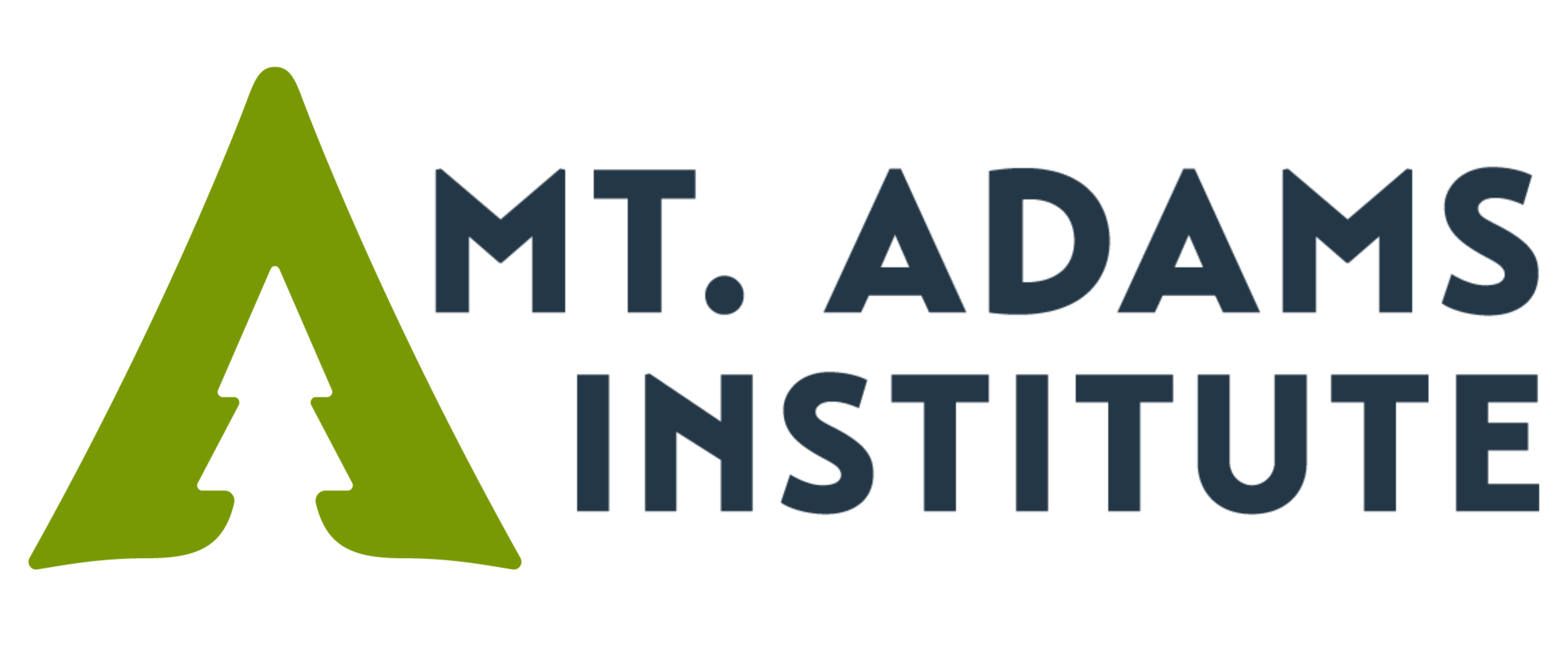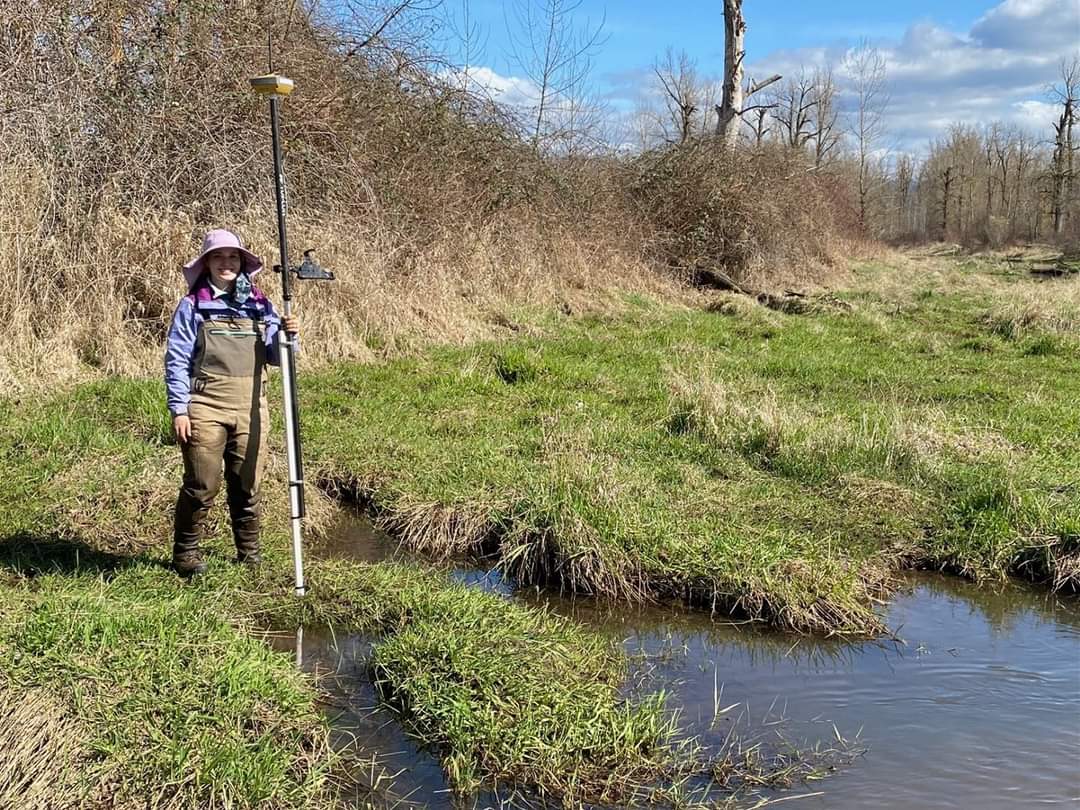Working as a field technician for Lower Columbia Estuary Partnership in the MAI Vetswork program is my first experience in the natural resource field. I came into the internship not sure of what to expect other than hard work. So far, I have learned much about the operations of a non-profit organization and the inner workings of how government and commercial companies achieve environmental goals as well as how to work independently. I oversee my own schedule and my own projects even though I am still new to the organization. Adjusting to this work style and the organization of the company has been interesting as its drastically different than in the military. I enjoy having the reigns on my own experience and have learned much about my own management style.
My first day in the field was shortly after the ice storm that came through northern Oregon and southern Washington. I went to Steigerwald wildlife refuge and was given a tour and rundown of the massive floodplain restoration and dike removal project. The icy fields and snow drifts were beautiful. Since that first day at Steigerwald the weather has changed the site every time I’ve gone back. The second time I went to Steigerwald it was much warmer however ominous dark clouds rolled over Crown Point, which overlooks Steigerwald lake, and brought in freezing rain and hail. The next time I was working at the site the weather was much more agreeable, and thank goodness it was, as I was waist deep in Gibbon’s creek for most of the day assisting in RTK mapping of the creek bed and banks. My most recent trip out to Steigerwald spring was in full bloom and all the baby trees and bare poles planted previously had sprung to life. What was most beautiful was a facine that had been put in earlier in the year to help build up the banks of Gibbons creek and prevent erosion. A hand-woven living fence of willow poles had sprouted leaves and grown all along the creek rebuilding eroded edges. Along the lakes were piles and teepees of willow poles that had also begun life again and were growing leaves and roots deep into the water. I found this absolutely fascinating as I did not know that willows could grow this way or how resilient and adaptable the tree was.
Another site that I have enjoyed working in is Sandy River Delta in Troutdale OR. The first time I went to the site was in March for a volunteer tree planting event and I brought along my science and nature-loving 4-year-old daughter. She watched everything the LCEP team, and I were doing intently, and she proudly planted a white oak all by herself. We have visited the site a few times for her to check on her tree, which is doing well. After finishing tree plantings in the early spring, I went to Sandy River Delta again and surveyed some older planting sites with some Forest service folks to figure out what type of maintenance is needed and how to complete restoration in a part of the park called Toby’s Woods. On this excursion I found a real joy in the surveying and monitoring of plants and requested to be included in more projects of this nature. I will be going out again this week to follow up on this survey and move forward with maintenance and monitoring.
Every experience I have had with this internship has been completely new. I assisted in the collection of water quality data with a member of the science team and everything about that day was brand new down to driving a Prius for the first time. I wore waders for the fist time and found out too late that the boots I had grabbed at the office were way too big and made me a bit clumsy, which was not good for climbing down muddy, rocky banks in the middle of nowhere. We visited about 15 remote sites at creeks and streams in NW Oregon that flow into the Columbia and collected multiple samples and readings. I had a meet and greet zoom meeting with NOAA that day and had to pull off on the side of a country road to call in. In the middle of the meeting a kind man pulled over thinking I had gotten stuck in the ditch. Overall, it was a fun day, but I do not recommend driving down logging roads in a Prius.
My favorite site is Salmon Creek in Felida WA. Salmon creek meets with Cougar creek and twists through a vast wetland area with patches of pacific willow trees. There are large areas of young and newly planted native plants including a lot of nootka rose, spirea, and various hybrid willows. At this site, my only work is the health and maintenance of these young plants and I enjoy it quite a bit and have seen plants thought to be dead come back to life and start to thrive. The beauty of the site is not the only reason it is my favorite, the wildlife at the site is what makes it special. Within two hours of arriving to the site one day I had seen 4 adult bald eagles fighting off a juvenile bald eagle that wanted to nest in a tree nearby, 6 deer including a newborn fawn, a coyote, an intact beaver skeleton, and at least 6 other bird species. It is a truly special site.
I have worked on dozens of projects at dozens of sites and have learned so much about native plants and about maintenance practices. I feel like the variety of work I have done is helping me to find my niche and what I want to continue working on and where I would like to go within this field. I look forward to the onslaught of field work coming my way this summer and I can’t wait to see where this internship will take me.

